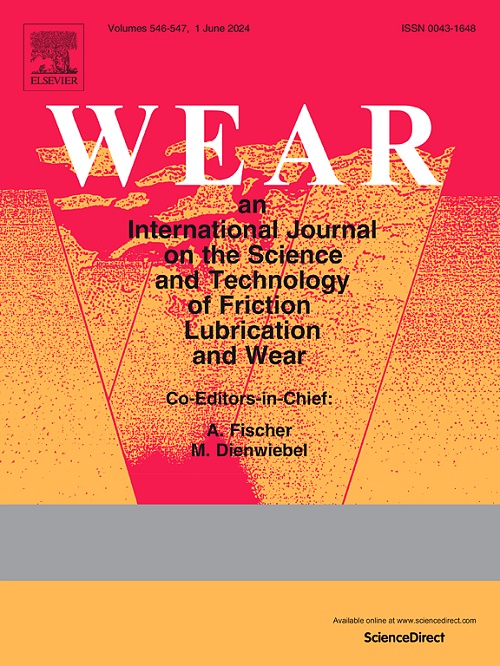Modeling on cutting force considering tool flank wear in ultrasonic vibration-assisted milling Ti3Al
IF 5.3
1区 工程技术
Q1 ENGINEERING, MECHANICAL
引用次数: 0
Abstract
Ti3Al compounds have potential applications in the aerospace field because of their exceptional mechanical performance at high temperatures, while poor processability becomes the main bottleneck of their applications. This study aims to analyze the tool wear characteristics of the tool flank and their impact on cutting forces during ultrasonic vibration-assisted milling (UVAM) of Ti3Al compounds, with the goal of optimizing cutting parameters and improving machining efficiency. Based on the oblique cutting theory, a milling force model that accounts for tool flank wear was developed. Ti3Al workpieces were subjected to side-milling and up-milling on an UVAM platform. The wear characteristics of the tool and the variations in cutting force with respect to different milling lengths, cutting parameters, and ultrasonic amplitudes were analyzed. The results show that the wear condition of tool flank has a direct impact on cutting force. The cutting force prediction model that incorporates tool wear demonstrated higher accuracy, with average relative deviations of 9.13 % and 13.38 % for the Fx and Fy components, respectively. Adhesive wear is the primary type of tool wear throughout the machining process. Compared to conventional milling (CM), UVAM significantly reduces tool wear, with the wear rate decreasing by approximately 38.4 %, but a too-large amplitude causes additional stress and damage to the tool surface. The research demonstrates that reasonably controlling the cutting parameters and ultrasonic amplitude is effective to slow down the tool wear and lower the cutting force, resulting in good surface quality and machining efficiency.
求助全文
约1分钟内获得全文
求助全文
来源期刊

Wear
工程技术-材料科学:综合
CiteScore
8.80
自引率
8.00%
发文量
280
审稿时长
47 days
期刊介绍:
Wear journal is dedicated to the advancement of basic and applied knowledge concerning the nature of wear of materials. Broadly, topics of interest range from development of fundamental understanding of the mechanisms of wear to innovative solutions to practical engineering problems. Authors of experimental studies are expected to comment on the repeatability of the data, and whenever possible, conduct multiple measurements under similar testing conditions. Further, Wear embraces the highest standards of professional ethics, and the detection of matching content, either in written or graphical form, from other publications by the current authors or by others, may result in rejection.
 求助内容:
求助内容: 应助结果提醒方式:
应助结果提醒方式:


